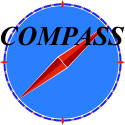 W45 Analysis and Software Page
W45 Analysis and Software Page
This page is under construction.

Contact
Mario Leberig
for more information.
The A1 Analysis
These notes are mainly for personal use (reminding me, which programs I used)
to allow fast resumption after one of the frequent interruptions. All this
analysis work is done on the gridka
computer center in Karlsruhe. The main tool used is Phast (Version 7.005).
There are three working directories containing all tools and programs:
- phast.7.005: containing the phast installation and the user events which
reduce the miniDST to microDSTs and afterwards extract the necessary
histograms from this microDST.
- MDST: This directory contains the tools which make the production
of the microDSTs easier.
- asym: In this dierctory the tools are stored to analyse the microDSTs
and calculate the asymmetries.
-
Produce MicroDSTs
Our analysis starts from the produced MiniDSTs, which are stored on compass2
disk of gridka. In a first step we select with some loose cuts on the event
kinematics and topology the events which could be useful for our analyis.
This events we store in MicroDSTs. This reduction is mainly done by the phast
function UserEvent25. The data processing is automized by means of some shell
scripts (they will be briefly described here in alphabetical order):
- add_All_hist.sh : merges all histo files containing check
histograms which have been produce during the MicroDST production
into a single file.
-
Analyse MicroDSTs
To analyse the MicroDSTs there are at the moment still two Phast user
functions. For the inclusive asymmetries UserEvent20.cc should be used
for the semi-inclusive analysis UserEvent23.cc should be used. The final
goal is to merge this two analysis as the inclusive asymmetry is a member
of the tuple of asymmetries to be measured to extract the quark polarisations
for single flavors.
The output of this second step is used for cross check, plotting of e.g.
kinematic variables and to calculate the final result.
-
Determine the Final Results
- Prepare analysis:
Before the final analysis can be started in each Period 4 files have to be
created. These files contain the information which configurations should
be combined in the asymmetry calculation. These files are called Global.list,
Cons.list, GlobalFake.list and ConsFake.list
-
How to Run the Analysis
- To produce MicroDSTs use "runMDST_all" in directory
"/grid/fzk.de/home/leberig/MDST".
- To analyse MicroDSTs use "run3_all" in directory
"/grid/fzk.de/home/leberig/asym"
- To analyse the output several tools are available:
- add_All_hist.sh merges all output histo files and thus prepares
the necessary histograms about he average kinematics.
- print_total_yield.sh "year" print the number of events in each
configuration invoking the program total_yield.cc.
- The root macro check_yield.cc provides a function
check_yield("year","period","runnum") which displays the check
histogramms filled during production. A second function
check_values("year","period","runnum") allows to look at the
quantities relevant for the asymmetry calculation.
- The root macro check_yield_file.cc does the same but operates on
the current root directory.
- The actual asymmetry calculation is than done by calling the program
analyse_all.sh "year" which invokes A1_All. This script creates
a number of output files, which are all located in "year"/result/:
- The final data combination is then done by the root macro A1_tot.cc.
This program allows to determine the asymmetry for a given year or
for all years together. Usage:
- load macro: .L A1_tot.cc
- execute macro by calling control(flag) where flag can be either
the year (2002 and 2003) or 0 for both years.
- the output can be found in subdirectory /result or result for
the combined output.
-
Other Activities on this Topic
-
To Do
This page was updated on July 23th, 2004
by Local Webmaster
![]()